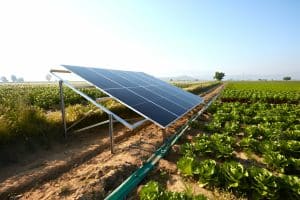Most of the people in the United States don’t remember the time when there was no electricity. People have been depending on the power grid for as long as they can remember. But what would happen if power suddenly goes out across the country or even all over the world? Are you prepared for such a scenario? Do you have alternative energy sources for your home?
When you live in a homestead, you likely have some way to power your home without relying on the electrical grid. Below are some of the alternative energy sources you can incorporate in your home.
Solar Power
Solar power is perhaps the most popular of all alternative energy sources we have right now. It is the energy source of choice of many homesteaders though it’s fast gaining fans among urban settlers.

Solar energy is produced by harvesting sunlight, as many of you probably know by now. The energy gathered from the sun is then converted into electricity. This is usually done using photovoltaic (PV) cells or solar panels. The problem with the use of solar energy in households is the price. Solar cell systems are expensive though there’s been a steady decrease in cost every year. The main draw of using solar panels is that it is more efficient and you save more in the long run. It is also generally better for the environment despite the greenhouse gases emitted during the manufacturing process of the PV cells.

You can opt for solar energy over other alternative energy sources if you live where the sun is always shining. Arizona, with 4,015 hours of sunshine a year, is at the top of this list. If you’re from this little Norwegian village of Rjukan, which spends half a year without sunshine, forget about solar energy.
There are three types of residential solar power systems: grid-tied, off-grid and a combination of the two. The latter is the best system as it takes the main features of the first two. The grid-tied solar power system with battery backup lets you sell electricity back to the companies like the grid-tied system while also equipped with a battery to store energy for later use like the off-grid one. The third option, however, is the most expensive leaving most homesteaders to choose the off-grid solar power system.
Geothermal Power
If solar power derives energy from the sun, geothermal power harvests from the Earth. Using geothermal energy to power your home is a little on the expensive side, however. That’s why this alternative energy source is relegated to heating and cooling your homestead.

In the old days, the heat from the Earth’s interior, courtesy of hot springs and pools, was also used for cooking, bathing and treating health issues. While these are still done today, mostly in spas, the heat inside the Earth is now more commonly used to control the temperature in your home.

The temperature of the earth’s interior, from 12 to 40 feet below the surface, remains constant. It stays around 50 or 60 degrees Fahrenheit just a few feet down. During cold days, the heat inside the Earth can warm your home. One option is by directly harnessing hot water from the Earth. The water from geothermal reservoirs and hot springs is pumped from the Earth using pipes. It then passes through a heat exchanger. This device then gathers the heat then shifts it to the heating system of your home.

A geothermal heat pump, meanwhile, can make your home warmer or cooler. On hot days, it draws the heat away from your home and transports it to the ground or water. When it’s cold, the pump harnesses the heat from the pipes and transfers it throughout your home through a duct system.
Wind Energy
Wind is another one of the old alternative energy sources we have. Humans have been using wind to their advantage for centuries. In fact, our ancestors may not have discovered the world without the wind blowing on the sails of boats and ships.

People have also been harnessing wind energy using windmills and wind turbines to power their homes. It remains popular today as evidenced by the many giant white wind turbines all over the world. In 2014, these wind turbines were responsible for 4 percent of the electricity in the whole world.
These alternative energy sources can also be utilized in your homestead. Small wind turbines were developed precisely to generate electricity for a household. In the United States, around 20 million homes get their power from wind energy.

The best thing about wind energy is that it is renewable (as long as there s wind, you can generate electricity) and it doesn’t generate any waste. The main issue, meanwhile, is that it is not that effective in places where there is little or inconsistent wind. The wind turbines also pose as a danger to wildlife.
Hydroelectric Energy/Hydro Power
The concept behind hydro power is the same with wind turbines. The main difference between these two alternative energy sources is too evident that we won’t bother talking about it anymore.

What we need to discuss is how you can utilize hydro power in your homestead. The first and most important requirement is, of course, running water. If you’re fortunate to live near a stream or river, then you can go ahead and build your hydro power system.
The main disadvantage of hydro power is the proximity between the water source and the area to be powered. In this case, your homestead. Most off-gridders prefer to settle near a river or any body of water but not everyone can do so. This means not all homesteaders can get energy from running water.
Methane
Homesteaders raise livestock for meat, eggs, milk and other food products. These animals also produce lots of manure, which make them good alternative energy resources. How so? Manure produces natural gases as they rot. You can then harness the methane and use it as fuel. If you prefer not to handle manure, you can produce biogas by composting plant materials.

There are other alternative energy sources that can power your homestead. Some of these, nuclear energy and tidal energy in particular, are a bit out of your reach and may be too much for your homestead to handle. The other alternative energy sources you can utilize in your homestead are wood gasification, wood fuel, hydrogen gas and generators.

Wood gasification is the process of superheating wood or charcoal until they produce gas. You can then use this combustible gas to fuel a generator. Wood fuel is the simple act of burning wood to generate light and heat. You can also boil water and cook food using the heat from the fire. Hydrogen, meanwhile, is a form of natural gas. Of all the natural gasses used as fuel, hydrogen is the cleanest and least destructive to the environment. In fact, its gas cells only releases water vapor and warm air. In comparison, fossil fuel emits atmospheric pollution during combustion. As for generators, well, we all know what they are for and how they are used.
Just a disclaimer – We have partnered with these companies because we use their products and/or proudly trust and endorse them – so we do receive a commission if you make a purchase or sign up for services. Often, we are able to negotiate special discounts and/or bonuses, which we will pass on to you via our links. We often get short notice on sale items available for 24-48 hours as we will pass these savings onto you.
























